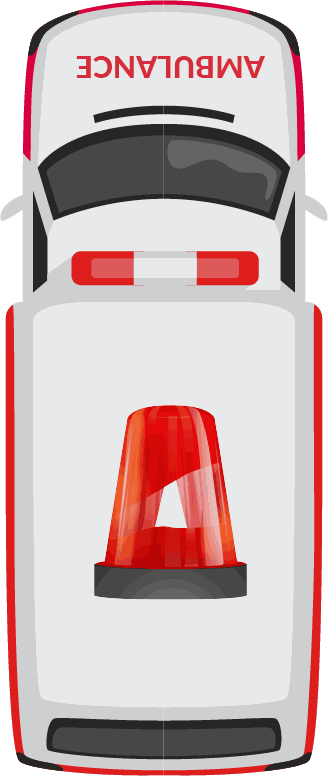In the event of a medical emergency, every second count when it comes to rescuing the life of a patient. In many circumstances, the first evaluation and adherence to medication during the first hour is critical, and that period of timing is commonly attributed as the "Golden Hour." Ambulances are critical in the golden hour since they are responsible for both the first line of treatment and transferring the patient to the hospital. All of these critical events require rapid attention, which begins as soon as the person enters the ambulance.
According to research conducted by the RADHEE foundation, 24,012 people die every day in India due to a delay in seeking medical assistance during the Golden Hour. According to the poll, two out of ten people die before they reach the hospital. The final point is that it is critical to consider all connected issues and actions while dealing with a situation. Perhaps the best-equipped ambulance, however, must arrive at a specialist emergency center as soon as possible to have the best chance of saving a life.
We need to make people aware that in a medical emergency, every second matter, which is why people must comply when an ambulance approaches them. It might be the deciding factor in some cases as well. We must be cautious about providing an alternative way to the ambulance as traffic intensifies on the roadways. The drivers should immediately move to the side and make way for the ambulance as soon as the siren is activated. A unified message will clear up any misunderstandings and ensure that ambulances and other emergency vehicles are moving at top speed that would save lives and accomplish their rescue operations. Research conducted in the early 2000s to determine the causes of Tamil Nadu's static neonatal and maternal death rates highlighted a lack of dependable, low-cost, and responsive emergency conveyance as a major problem. AmbiPalm is working hard to eliminate inconvenient scenarios so that people don't have to risk their lives just because they can't afford an ambulance or because one isn't available.
What Can You Do to Save a Life?
Awareness: If People begin to acknowledge their role in saving lives, ambulances stalled in traffic with patients in need of medical services on the brink of death may become a thing of the past. AmbiPalm has developed an app that allows you to connect with an ambulance and track it in real-time.
Almost 50% of the emergency calls to healthcare institutions are classed as high-priority calls, signifying that the caller is experiencing chest pains, difficulty in breathing, cardiac arrest, traumas, or another potentially life-threatening condition. Aggressive drivers, on the other hand, cause delays that can be the difference between life and death or severe impairment. According to the conventional paradigm, people who do not stop for ambulances increase the risk of someone in a severe state dying since an ambulance cannot reach them quickly enough to bring them to a hospital.
AmbiPalm chose to raise awareness about it since every second count when it comes to saving lives. In an emergency, the last thing you want is to be delayed. Our ambulance service professionals with their vehicles are always on the go. With AmbiPalm, you may choose the type of ambulance you want and the features you desire. Our cutting-edge algorithms help you find the Driver with the Ambulance that best suits your demands in the shortest time possible.
Because we at AmbiPalm are racing to save lives!
